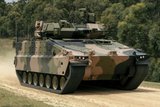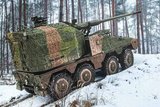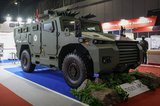Kalashnikov, the Central Scientific Research Institute of Precise Mechanical Engineering and other entities in the Rostec state-run defence conglomerate have begun research into a fourth generation of Sotnik soldier-worn combat equipment, with a view to fielding it in 2035.
Rostec is already conducting preliminary tests of a third-generation Sotnik suite. Tactical and technical requirements for the fourth generation are currently being defined.
R&D participants will closely study advanced combat gear used by various armies in the world, determine prospects for the development of combat equipment ‘and establish the full range of upcoming research, development and technological research necessary for creating a new generation of equipment’, Rostec announced on 29 January.
It added that fourth-generation Sotnik gear will include ‘a fundamentally new set of technology’ developed by the Russian defence industry, such as robotic equipment and integrated information exchange systems.
Rostec claimed to have delivered more than 300,000 second-generation Ratnik combat outfits by the end of 2020, with a view to fully replacing legacy equipment by 2025.
As part of our promise to deliver comprehensive coverage to our Defence Insight and Premium News subscribers, our curated defence news content provides the latest industry updates, contract awards and programme milestones.





















